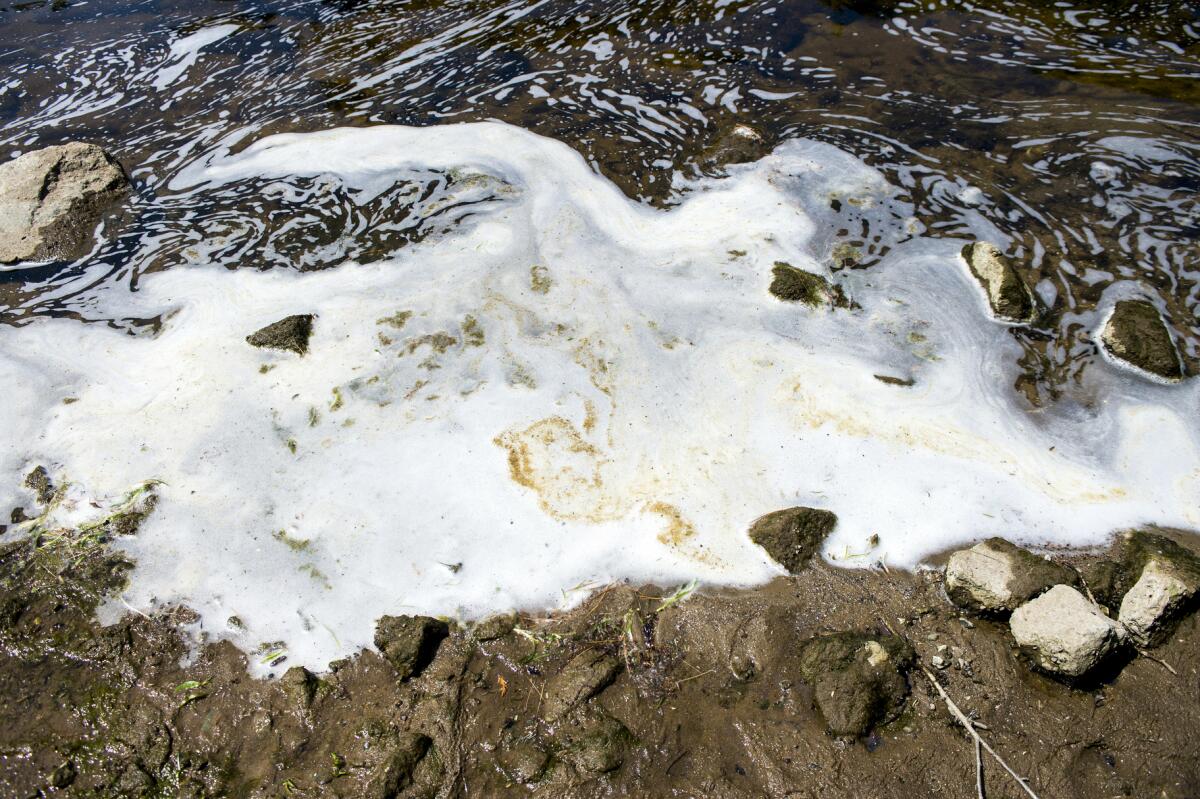‘Forever chemicals’ are everywhere. It’s time to rein them in

- Share via
Polyfluoroalkyl and perfluoroalkyl substances, or PFAS, are a class of man-made chemicals that break down slowly in the environment, can accumulate in the human body and have been linked to all manner of negative health effects from cancer to high cholesterol.
But these “forever chemicals” are nearly impossible to avoid. They are, quite literally, all around us: in consumer products, from cosmetics and cookware to food packaging and firefighting foam; in our food supply; in the soil, air and water; and even running through our veins. The Centers for Disease Control and Prevention has found traces of PFAS in the blood of nearly everyone it has tested for the past two decades, which suggests widespread exposure.
That’s why it was heartening that the Biden administration announced this week a sweeping three-year plan to regulate the 600 PFAS used in the U.S., including testing for contamination in food, soil and drinking water, and setting enforceable limits on the amount of PFAS that can be in drinking water. “We’re going to use every tool in our toolbox to restrict human exposure to these toxic chemicals,” U.S. Environmental Protection Agency Administrator Michael S. Regan told the Associated Press.
We hope so, because scientists and environmentalists have been sounding the alarm for years about the unregulated use of PFAS as a growing body of research has found compelling links between exposure to PFAS and some cancers, thyroid disease, immunity disorders and other health conditions. Yet EPA officials under both the Obama and Trump administrations did very little, though the U.S. government has its own PFAS problem it hasn’t dealt with. Nearly 700 military facilities around the country, including several in California, may be contaminated by the use of firefighting foam, which is made with PFAS.
In the absence of federal leadership, a few of the more environmentally minded states, such as California, have created their own PFAS regulations. Last month, Gov. Gavin Newsom signed two bills to reduce the use of PFAS in California. One would prohibit these chemicals in paper or cardboard food packaging (think pizza boxes), which is used to make them waterproof or grease-free, starting in 2023, as well as require that cookware, such as nonstick pans, with added PFAS or other chemicals of concern have consumer disclosures.
The other bill bans the sale of any product for children or infants, such as playpens and cribs, made with PFAS starting in 2023. A law passed in 2020 will prohibit PFAS-based firefighting foams in California beginning in January.
These laws may helpCalifornians avoid exposure, but since chemicals don’t recognize boundaries, this comprehensive national strategy from the Biden administration to rein in these “forever chemicals” is essential.
More to Read
A cure for the common opinion
Get thought-provoking perspectives with our weekly newsletter.
You may occasionally receive promotional content from the Los Angeles Times.









